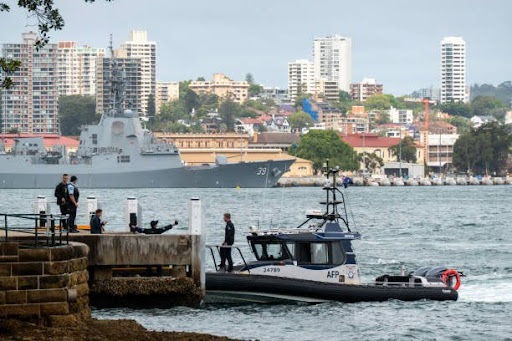As coastal infrastructure continues to expand, the need for efficient, accurate, and safe inspection methods becomes increasingly important. Among the most transformative innovations in this space is drone technology. With its ability to capture high-resolution imagery and data from hard-to-reach places, drone technology is revolutionizing the way jetty inspection and maintenance are conducted. This advancement is particularly useful for both traditional fixed structures and newer models like the floating jetty, which present unique challenges due to their dynamic positioning and exposure to variable marine conditions.
Evolving Needs in Jetty Maintenance
Jetty structures really get put through the wringer—saltwater eats away at them, waves are constantly smacking them around, and don’t even get me started on all the gunk and critters that try to make them home. If you wanna keep these things standing (and safe), you’ve gotta check up on them like, all the time. Back in the day, inspections were basically a circus: divers suiting up, boats bobbing around, scaffolding everywhere… Not cheap, and let’s be real, not exactly the safest gig either.
But now? Enter drones. Total game-changer. These little flying gadgets (UAVs if you wanna sound fancy) swoop in and do the grunt work. They zip into all those sketchy, hard-to-reach spots—no need to dangle a human over the edge. Plus, the photos and videos they grab are crystal clear, so you actually know what’s falling apart. Saves money, saves time, and honestly, saves a lot of headaches.
How Drones Enhance Jetty Inspections
Alright, here’s how I’d say it if I was just chatting with you: So, drones with fancy HD cameras and all sorts of sensors? Absolute game-changers for checking out jetties. They zip around, spot cracks, rust, stuff that shouldn’t be out of place—you name it. Especially with those floating jetties that bob around with the tide; drones make it way easier to get a close look without messing up anything or getting in the way of the boats.
Some of these drones are decked out with LiDAR and thermal cams too, which is seriously cool. That means they can make super detailed maps and even spot heat spots or weird stuff happening under the surface—stuff you’d never catch with old-school inspections. Especially when you’re dealing with spots no person can squeeze into, drones just do it faster and safer.
Plus, since it’s so quick to send a drone out, you can check up on things way more often. That means you catch tiny problems before they turn into big, ugly disasters. In the long run? Less cash wasted on repairs, less downtime, and way fewer headaches for everyone. Honestly, why would you even bother doing it the old way anymore?
Maintenance Applications for Floating Jetties
A floating jetty is a whole different beast when it comes to maintenance. They bob up and down with the tide, always in motion—honestly, it’s kind of a headache for regular inspections. You try crawling around on one of those things with a clipboard and you’ll see what I mean. That’s where drones swoop in (literally). These bad boys don’t care if the platform’s rocking or rolling; they’ll hover above, snap some high-res shots, and keep everything steady even when the jetty’s doing its little dance.
With drone footage, engineers and maintenance folks can spot all sorts of problems—rust creeping in, anchors getting sketchy, bolts working their way loose. Basically, you get a front-row seat to the early warning signs before things go sideways. Fixing stuff before it breaks? Way less stressful than dealing with a full-blown disaster.
Also get this: sometimes they’ll team up drones with underwater robots (ROVs—think mini-Submarines with GoPros strapped on). So, while the drone checks out the top, the ROV dives down to peek at all the underwater bits—chains, pontoons, mooring lines, the works. Together, they give you the full scoop on what’s happening above and below the waterline. Makes life a whole lot easier when you’re trying to figure out what needs fixing and when.
The Future of Drone Use in Jetty Management
Drones are getting smarter by the day—honestly, it’s wild. Soon, they’ll be zipping around jetty sites, spotting problems on their own, thanks to all that AI and machine learning wizardry. No more squinting at endless footage just hoping to catch something off; the bots’ll just ping you when something looks off. Super handy when you’re dealing with massive sites or those floating jetties in the middle of nowhere.
Moreover—digital twins are in the mix too. Basically, it’s like having a SimCity version of your jetty, but way nerdier. The drones scoop up data, feed it into this virtual clone, and then you can play out different scenarios to see what breaks down next. Predictive maintenance, they call it. Translation? Fewer nasty surprises, and you might even save a few bucks on repairs. Not too shabby.
Conclusion
Honestly, drones have totally flipped the script when it comes to checking out jetties. You don’t have to send people dangling over the water anymore—just fire up a drone and boom, you’ve got crisp footage and all the juicy details you need. Works for your classic old-school jetties and those fancy floating ones too. And get this: as drone tech keeps leveling up and starts syncing with all those high-tech digital tools, these little flying gadgets are basically becoming the MVPs of keeping coastal stuff safe and in good shape. Safe to say, the days of clipboards and binoculars are fading fast.
Keep an eye for more latest news & updates on Cedar Software!




